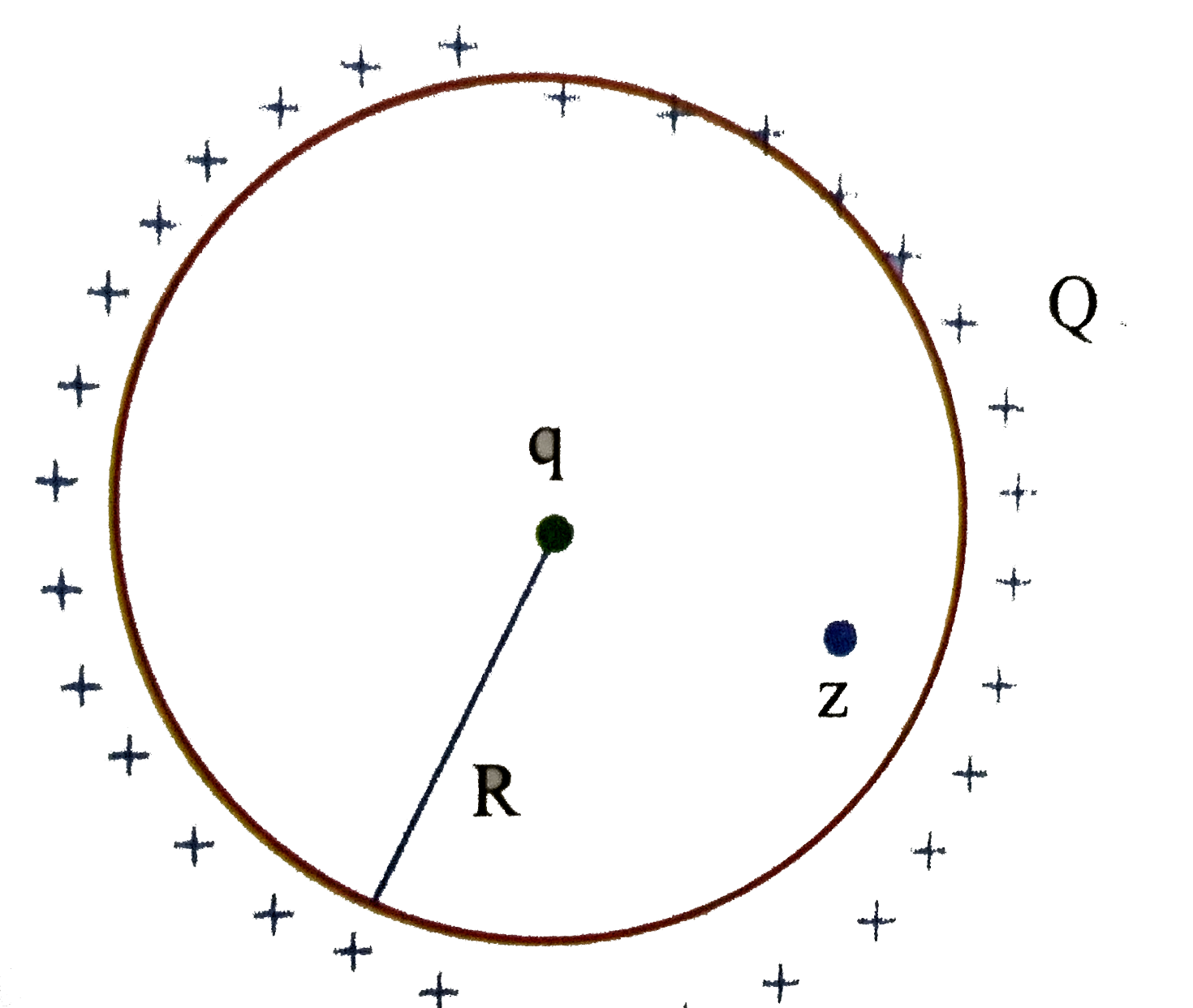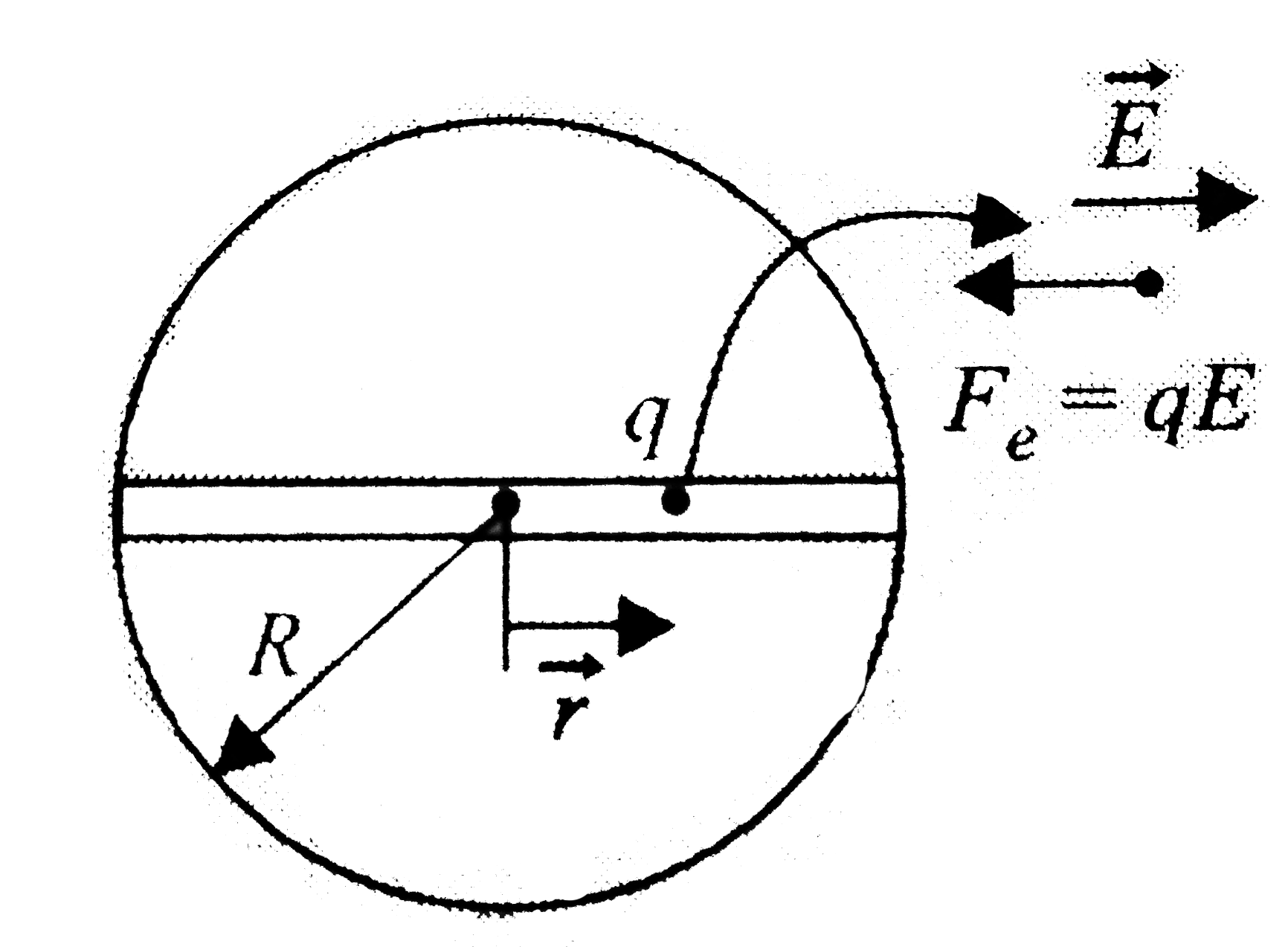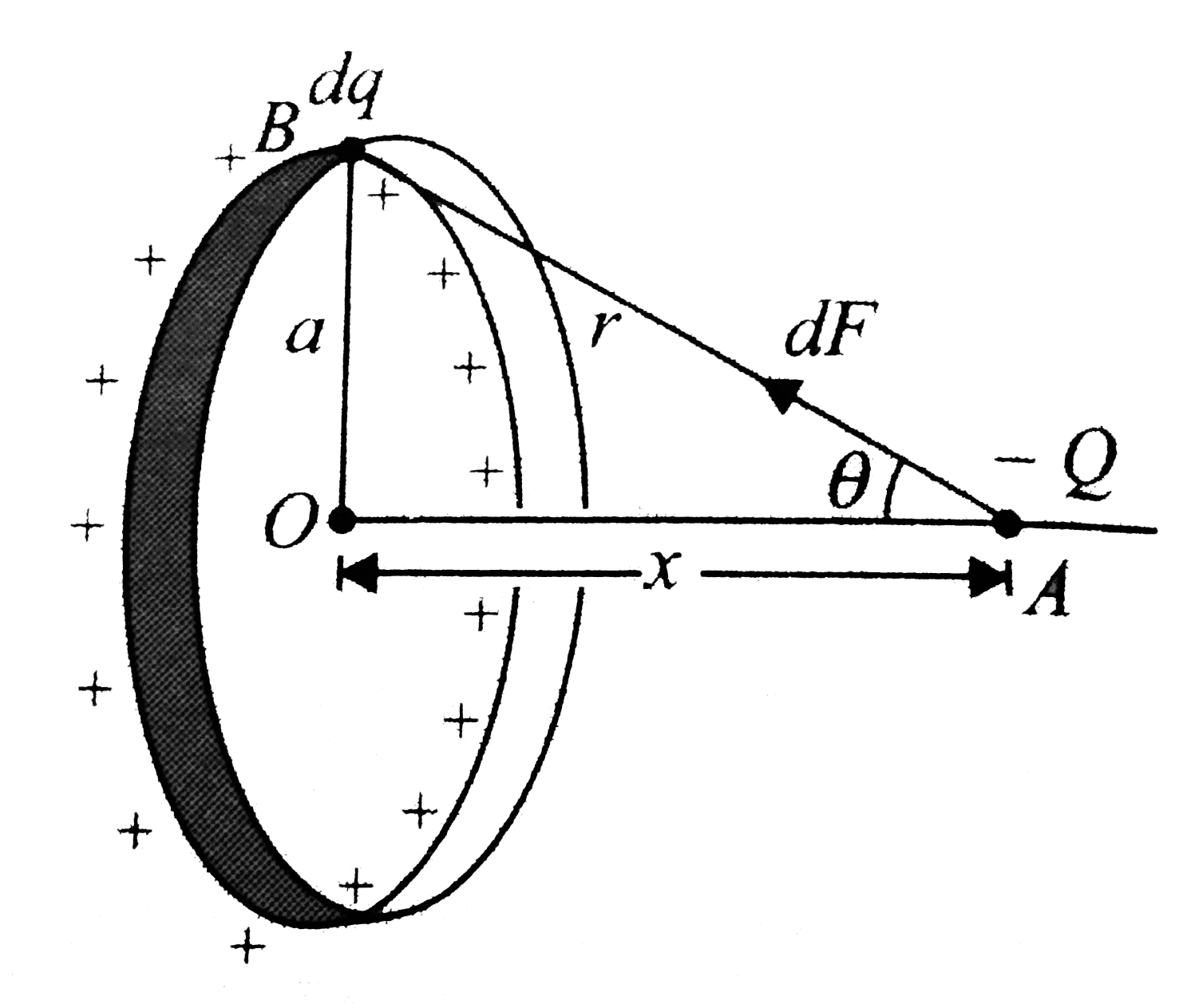A thin fixed ring of radius 'R' and positive charge 'Q' is placed in a vertical plane. A particle of mass 'm' and negative charge 'q' is placed at the centre of ring. If the particle is given a small horizontal displacement, show that it executes SHM. Also find the time period of small oscillations of this particle, about the centre of ring. (Ignore gravity)
To solve the problem, we will follow these steps:
Step 1: Understanding the Setup
We have a thin fixed ring of radius R with a positive charge Q and a particle of mass m and negative charge q placed at the center of the ring. When the particle is displaced slightly from the center, we need to analyze the forces acting on it.
Hint: Visualize the system and identify the forces acting on the particle when it is displaced.
Step 2: Electric Field at the Center of the Ring
The electric field E at a point along the axis of the ring (which is the center in this case) due to a charged ring is given by the formula:
E=kQx(R2+x2)3/2
where k is Coulomb's constant, Q is the charge on the ring, R is the radius of the ring, and x is the displacement from the center.
Hint: Remember that the electric field points away from the positive charge.
Step 3: Force on the Particle
The force F acting on the particle of charge q due to the electric field E is given by:
F=qE
Substituting the expression for E:
F=q⋅kQx(R2+x2)3/2
Hint: The direction of the force will be towards the center of the ring since the particle has a negative charge.
Step 4: Approximation for Small Displacements
For small displacements x (where x≪R), we can approximate:
(R2+x2)3/2≈R3
Thus, the force can be simplified to:
F≈kQqR3x
Hint: This approximation is valid because x is small compared to R.
Step 5: Identifying Simple Harmonic Motion (SHM)
The force F can be rewritten as:
F=−kx
where k=kQqR3 is the effective spring constant. The negative sign indicates that the force is restoring, which is characteristic of SHM.
Hint: Recall the form of Hooke's law, which describes SHM.
Step 6: Finding the Time Period of Oscillation
The time period T of a simple harmonic oscillator is given by:
T=2π√mk
Substituting our expression for k:
T=2π√mR3kQq
Hint: Make sure to keep track of units when substituting values.
Final Result
Thus, we have shown that the particle executes simple harmonic motion and the time period of small oscillations about the center of the ring is:
T=2π√mR3kQq
We have a thin fixed ring of radius R with a positive charge Q and a particle of mass m and negative charge q placed at the center of the ring. When the particle is displaced slightly from the center, we need to analyze the forces acting on it.
The electric field E at a point along the axis of the ring (which is the center in this case) due to a charged ring is given by the formula:
E=kQx(R2+x2)3/2
where k is Coulomb's constant, Q is the charge on the ring, R is the radius of the ring, and x is the displacement from the center.
The force F acting on the particle of charge q due to the electric field E is given by:
F=qE
Substituting the expression for E:
F=q⋅kQx(R2+x2)3/2
For small displacements x (where x≪R), we can approximate:
(R2+x2)3/2≈R3
Thus, the force can be simplified to:
F≈kQqR3x
The force F can be rewritten as:
F=−kx
where k=kQqR3 is the effective spring constant. The negative sign indicates that the force is restoring, which is characteristic of SHM.
The time period T of a simple harmonic oscillator is given by:
T=2π√mk
Substituting our expression for k:
T=2π√mR3kQq
Thus, we have shown that the particle executes simple harmonic motion and the time period of small oscillations about the center of the ring is:
T=2π√mR3kQq
Similar Questions
A positive charge Q is uniformly distributed along a circular ring of radius R.a small test charge q is placed at the centre of the ring.

View SolutionA positive charge Q is uniformly distributed along a circular ring of radius R.a small test charge q is placed at the centre of the ring .The

View SolutionPositive charge Q is distributed uniformly over a circular ring of radius R. A particle having a mass m and a negative charge q, is placed on its axis at a distance x from the centre. Find the force on the particle. Assuming x is very less than R, find the time period of oscillation of the particle if it is released from there.
View SolutionA smooth chute is made in a dielectric sphere of radius R and uniform volume charge density. ρ. A charge particle of mass m and charge -q is placed at the centre of the sphere. Find the time period of motion of the particle?

View SolutionTwo charges, each equal to q, aer kept at x=−a and x=a on the x-axis. A particle of mass m and charge q0=q2 is placed at the origin. If charge q0 is given a small displacement (ylt lt a) along the y-axis, the net force acting on the particle is proportional to
View SolutionA thin fixed ring of radius a has a positive chage q unformly distributed over it.A particle of mass m having a megative charge Q, is placed on the axis at a distance of x(x<<a) form the center of the ring. Show that the motion of the negatively chaged particle is approximatly simple harmonic. Calculate the time period of oscillation.

View SolutionTwo particles A and B , each carrying charge Q are held fixed with a separation D between them. A particle C having mass m and charge q is kept at the middle point of the line AB. If particle C is displaced through a distance x along the line AB. What will be the time period of the oscillations.
View SolutionA thin circular wire of radius r has a charge Q. If a point charge q is placed at the centre of the ring, then find the increase in tension in the wire.
View SolutionA positive charge q is placed in a spherical cavity made in a positively charged sphere. The centres of sphere and cavity are displaced by a small distance →l. Force on charge q is :
View SolutionA particle of mass m and charge q is located midway between two fixed charged particles each having a charge q and a distance 2l apart. Prove that the motion of the particle will be SHM if it is displaced slightly along the line connecting them and released. Also find its time period.
View Solution

